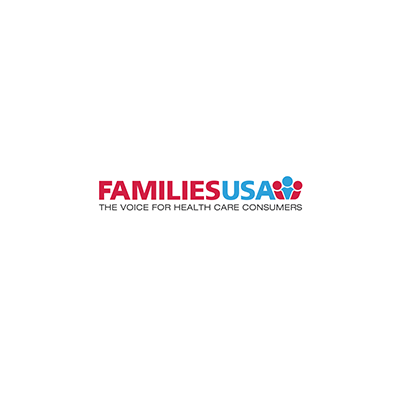Making Family Unity and Child Well-being a Priority in Immigration Enforcement
01.17.2019
As a Trump administration-bred humanitarian crisis rages at the U.S. border, President Trump remains resolute that the answer is $5.7 billion in funding to erect steel border barriers.
This administration has time and again been steadfast in its approach to immigration — intolerant, malicious and obstructive at every turn.
Our immigration system was designed to handle migration of young men and seasonal workers. Today, the majority of people arriving at the border are children and families from Central America seeking asylum, fleeing violence, crushing poverty and endemic crime. In November 2018 alone, 25,000 families arrived at the U.S. border, reflecting the highest monthly total on record.
Despite the changing face of immigration, the Trump administration has devoted much of its time in power to dismantling our current limited immigration system, punishing asylum seekers, separating families and attempting to deter entry into the United States.
This administration has unleashed a torrent of immigration enforcement actions aimed at excluding non-white immigrants from the United States, implemented in part through attacks on asylum seekers and our systems of protection, including zero-tolerance and wide-spread family separation which resulted in the separation of nearly 3,000 children from their parents — including parents and children who were exercising their legal right to seek asylum.
This administration’s brazen hostility toward non-white children and families seeking asylum also brought us tender-age shelters for babies and the youngest children; record numbers of children in detention; gross mistreatment of children in custody including unauthorized administration of medication and physical and sexual abuse; the arrest by U.S. Immigration and Customs Enforcement (ICE) of potential sponsors who come forward to care for unaccompanied children; regulatory efforts that target families who have immigrated lawfully, as well as their U.S. citizen relatives, including proposals to undermine their access to basic needs, including food, shelter, and health care, and those that would strip children of basic protections and keep families in detention while awaiting deportation; an attempt at banning asylum at the border blocked in the courts; a cap on refugees that will hit a record low in fiscal year 2019; a plan to force asylum seekers to wait for entry in Mexico; and in December 2018, the tragic deaths of two migrant children in Customs and Border Patrol (CBP) custody. Both the “zero-tolerance” policy and the Administration’s larger immigration agenda have had devastating consequences for children, families, and neighborhoods of color across the country, harming the health and economic well-being of all of our communities.
Today, although roughly 95 percent of children known to have been separated from their families under the zero-tolerance policy in 2018 have now been reunited, this administration continues to separate children from their parents, often offering vague or unsubstantiated allegations of wrongdoing to justify the practice. And separations from non-parent relatives continue as a matter of operating procedure despite the inherent risks for children. These separations aren’t covered by Ms. L. v. U.S. Immigration and Customs Enforcement, the lawsuit that successfully challenged the practice of separating families at the border and resulted in a federal ruling that ordered a stop to most family separations at the border and required the reunification of all families that had been separated.
For a young child, separation from a parent or caregiver can have both immediate and long-term consequences. In the short-term, children may exhibit loss of appetite, difficulty sleeping, regressive behaviors, physical symptoms such as stomachaches and detachment — all common signs of post-traumatic stress disorder in young children. In the longer term, family separation can have negative impacts on both the emotional and physical health and well-being of separated parents and children. And longer periods of separation lead to greater psychological distress and increased risk for anxiety, depression and other disruptions in development, and pose challenges even after reunification. We have heard stories of young children crying when they first see their parents again, fearful that their parents will disappear and reluctant to leave their side, experiencing nightmares and having difficulty regulating their emotions. Many will continue to face long-term challenges including difficulty with emotional attachment to parents and caregivers, self-esteem, and physical and mental health.
With a partial government shutdown now in its fourth week and 800,000 federal employees missing their first paychecks on Jan.11, 2019, the impacts on immigrant children and families are coming into clear view. As federal agencies struggle to respond to the soaring numbers of migrant children and families crossing the border — many of them asylum seekers — the shutdown has effectively brought major parts of our immigration system to a standstill. This means that immigration officers and agents at the Mexico border are working without pay. Many immigration judges and clerks have been furloughed, leaving already backlogged immigration courts with new filings piling up on dockets, and judges, backlogged with immigration cases booked three to four years in advance, postponing court cases that could now take several more years to be heard.
Although ICE maintains Family Residential Standards, visits by pediatric and mental health advocates following visits to family detention centers have surfaced reports of inadequate or inappropriate immunizations, delayed access to medical care, inadequate education services and limited mental health services. Unprepared, ill-equipped and lacking even the basic standards of ICE facilities, Border Patrol is tasked with caring for children and families who have traveled long and far, who are often dehydrated and malnourished, who may have contracted influenza or other infectious diseases on their journey or soon after arriving at the border. Border Patrol agents aren’t equipped to respond to the needs of children and families, or to house them for very long. In recent weeks, with ICE and CBP facilities overcrowding, the administration has been dropping off families by the hundreds at bus stations across Texas, Arizona and New Mexico with no advance planning. This is the backdrop of the reality of what awaits the more than 2,000 migrants crossing the border each day, the majority of them women and children seeking asylum.
Sadly, the shutdown is only exacerbating this humanitarian crisis and making an already desperate situation for children and families at the border even more perilous.
Despite the dangerous conditions facing children and families crossing the border or in detention, President Trump remains resolute that the answer to this crisis is to erect more border barriers. The wall President Trump is so eager to build would likely force children and families to take even greater risks and attempt more dangerous journeys to cross the border with smugglers who are willing to venture into more life-threatening terrain to bring migrants across the border. In fact, recent reports suggest that while many migrants still use more established routes in Texas’ Rio Grande Valley to cross, a growing number of families are crossing along a big expanse of desert made up of the two most western counties in Texas and all of New Mexico known as the El Paso Sector. That’s where Jakelin Caal Maquin, one of the two children who died recently in CBP custody, crossed with her father. The wall would jeopardize the health of children and parents who travel through remote regions without access to food, water and medical services on their journey, and on arrival, spend days waiting in unsanitary and inadequate shelters without access to medical care in remote stretches of the desert. It will also likely create an even greater backlog at legal ports of entry — forcing migrants to wait months to cross the border — all the while waiting in unsanitary shelters already overcapacity in Mexico.
Even as President Trump holds firm to his plan for a border wall, children and families continue to cross the border in remote locations where CBP facilities lack sanitary conditions and medical care, posing a serious threat to their health and safety.
There is a better way.
The starting point for responding first and foremost must include making family unity and the best interests of a child the primary consideration in immigration enforcement. Such an approach would include:
- Sending more asylum officers to the border;
- Providing medical and child welfare screenings in addition to Border Patrol screening at the border;
- Using collaborative and interdisciplinary teaming of professionals including immigration lawyers, legal advocates, and child welfare and health personnel and ensuring access to facilities at the border for pediatricians and child welfare professionals to monitor conditions, provide guidance on protocols and procedures, and care for children;
- Ensuring access to immigration attorneys for children detained at the border;
- Hiring more immigration judges, U.S. Citizenship and Immigration Services (USCIS) asylum officers, and post-release caseworker services to protect children and assist families;
- Implementing alternatives to detention for families awaiting adjudication of asylum claims, that are both cheaper than detention and effective approaches for monitoring people while their cases proceed, including:
- The Family Case Management Program which provides case management, referral for supportive services and legal orientation for families seeking asylum, and
- Releasing families on recognizance, bond or parole while their cases proceed or using of ankle bracelets.
- Facilitating legal entry into the United States for asylum seekers, and ending the Administration’s metering policy which in practice has meant that asylum seekers are turned away in high-traffic ports of entry for days or even weeks.
The Trump administration’s zero-tolerance policy and litany of enforcement actions and missteps have caused irreparable harm to children and parents, with painful separations, lasting trauma, and for many, an uncertain future. We must begin to prioritize the needs of children and families placed at needless risk over deeply discriminatory and unnecessarily punitive immigration deterrence policies. We do not have to choose between meaningful immigration policies and child and family well-being.




